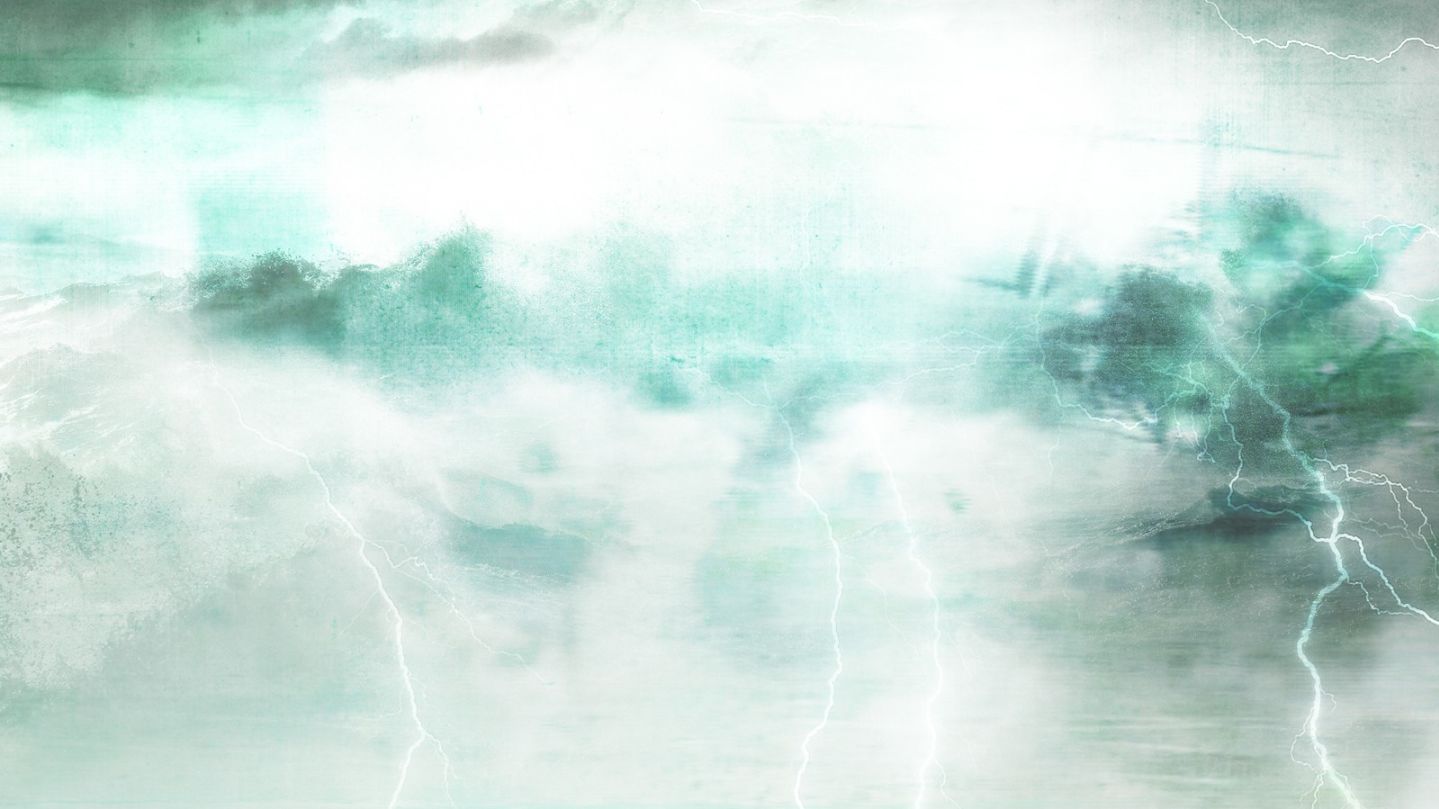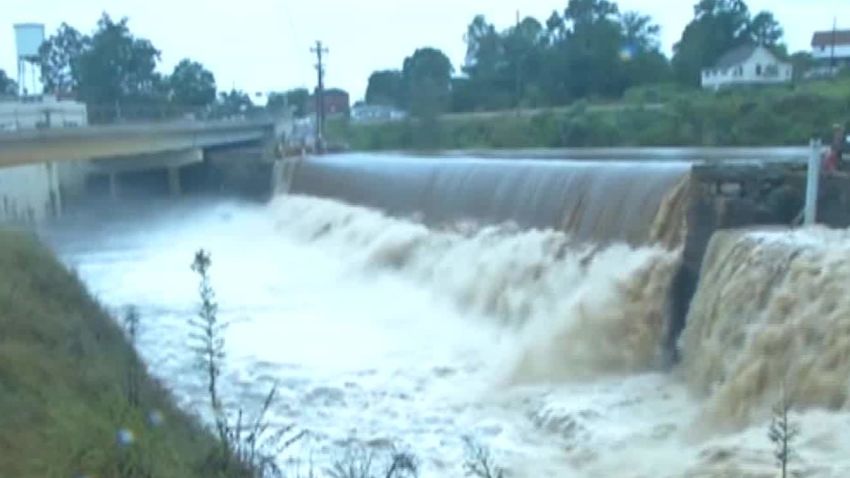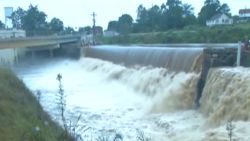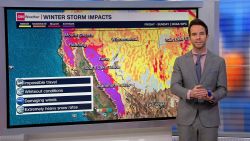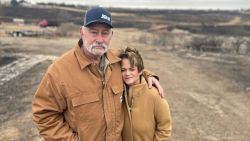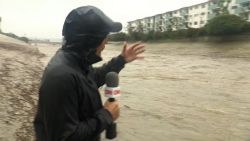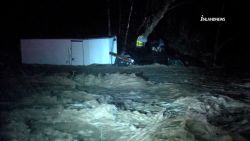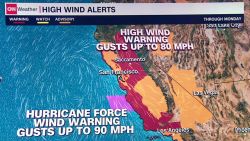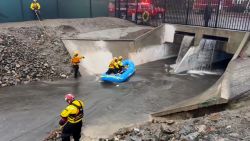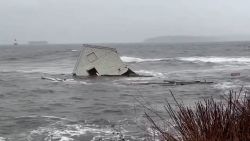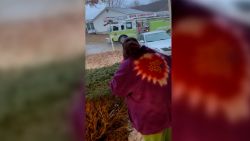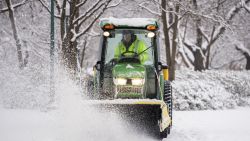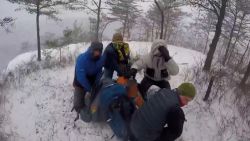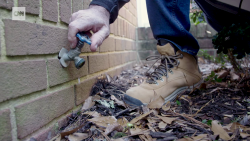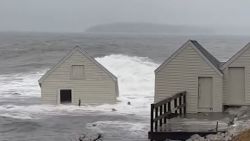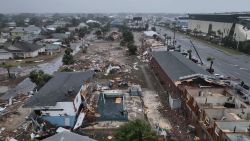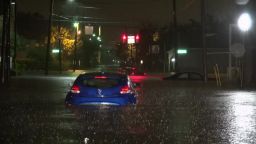Story highlights
NEW: Two deaths are reported in North Carolina; 11 in South Carolina
Mayor estimates damage could be in the billions of dollars
A mandatory evacuation is ordered after a dam breach
The rains may have stopped in South Carolina, but the danger and the work to rebuild are far from over.
“I believe that things will get worse before they get better,” Columbia Mayor Steve Benjamin told reporters Monday.
“Eventually the floods will abate, but then we have to access the damage, and I anticipate that damage will probably be in the billions of dollars, and we’re going to have to work to rebuild. Some peoples’ lives as they know them will never be the same,” he said.
One of those people is Columbia resident Angela Williams, who watched the relentless rainfall destroy her neighborhood.
“We have lost everything. What I got on my body is what we have,” she told CNN affiliate WIS-TV. “Pretty much everybody down that hill there has lost everything … our vehicles, our clothes, everything.
“But the best thing is that we still have our lives.”
Eleven people are known dead in the state due to weather-related incidents. Of those, seven drowned, according to the South Carolina Department of Public Safety. Four others died in traffic accidents.
One of the deaths was a state transportation employee.
Timothy Wayne Gibson, 45, died Sunday in floodwaters while overseeing work in Columbia, the South Carolina Department of Transportation said.
North Carolina reported two storm-related deaths. Both were the result of motor vehicle accidents, in Cumberland and Jackson Counties, according to Julia Jarema, an emergency management spokeswoman.
South Carolina Gov. Nikki Haley warned there could be other deaths.
Dam breach leads to mandatory evacuation
A mandatory evacuation was ordered downstream from the Overcreek dam after a breach Monday, a spokeswoman for the city of Columbia said.
Thom Berry, a spokesman with the South Carolina Emergency Management Division, said there was no major damage reported as a result of the breach. Overall, he said eight – possibly nine – dams have failed so far.
“We have several others that are in the process of being over-topped,” he said.
Haley said more evacuations are likely as floodwaters rise in spots, and authorities warned of the danger of roads that look OK on the surface but that may have been undermined by raging waters.
Residents urged to stay off roads
The most acute danger is south of Columbia, where as much as 20 inches of rain fell between Friday and Sunday. In that area, authorities remain in emergency response mode amid widespread flooding. North of the city, authorities have shifted to assessment and recovery mode – evaluating damage to roads, bridges and other infrastructure.
Some 1,300 National Guard troops have been activated to help respond to the historic storm, supplementing more than 250 state troopers and other state workers in addition to assessment crews from the federal government and other states, authorities said.
Crews performed hundreds of water rescues. A helicopter crew rescued dozens more, the governor said.
State officials urged people to stay off the roads. Haley said county officials would make decisions about closing their offices, and the state would follow suit in those locations. She said private businesses are not required to follow those decisions, but she encouraged them to do so.
She also urged people not to travel to flooded areas to gawk.
“This is not the time to take pictures,” she said.
About 550 roads and highways remained closed in the state, acting Transportation Secretary Christy Hall said, including 100 bridges and roads in the Columbia area. More closures are expected as waters flow toward the coast, she said.
State emergency officials said Columbia residents should boil their drinking water.
“Rising water from flooding can carry viruses, bacteria, chemicals and other submerged objects picked up as it moves through stormwater systems, across industrial sites, yards, roads and parking lots,” the South Carolina Emergency Response Team said.
One bit of good news: No hospitals in the state will have to evacuate, as had been earlier feared, Haley said.
The governor said she had phoned in a request for a major disaster declaration to the federal government, seeking immediate aid in 11 counties – a list expected to grow. President Barack Obama signed a disaster declaration Saturday, retroactive to Thursday.
Haley also said she had talked to Obama, who offered his condolences and prayers as the state begins what the governor said would be a long assessment and recovery.
South Carolina governor calls deadly rain a ‘thousand-year’ event
Storm brings massive flooding
The situation is the result of a weather system that funneled tropical moisture into South Carolina and refused to move on, CNN meteorologist Chad Myers said.
“It was a garden hose that just kept pouring ashore in one spot, and that spot was South Carolina,” he said.
State officials described it as a 1,000-year storm – referring to weather terminology describing a storm with a 1-in-1,000 chance of happening in any given year.
“This is an incident we’ve never dealt with before,” Haley said Sunday.
While the rain is beginning to move out of the region, as much as an additional 2 inches could fall, Myers said. But some rivers may not crest for possibly two weeks, he said, meaning parts of the state will be dealing with flooding for some time.
CNN’s Nick Valencia, Kevin Conlon, Devon Sayers, Sam Stringer, Dave Alsup, Tony Marco, Shawn Nottingham, Dominique Dodley and Kerry Chan-Laddaran also contributed to this report.
